BVIEC’S MONTHLY FUEL DATA – AUGUST
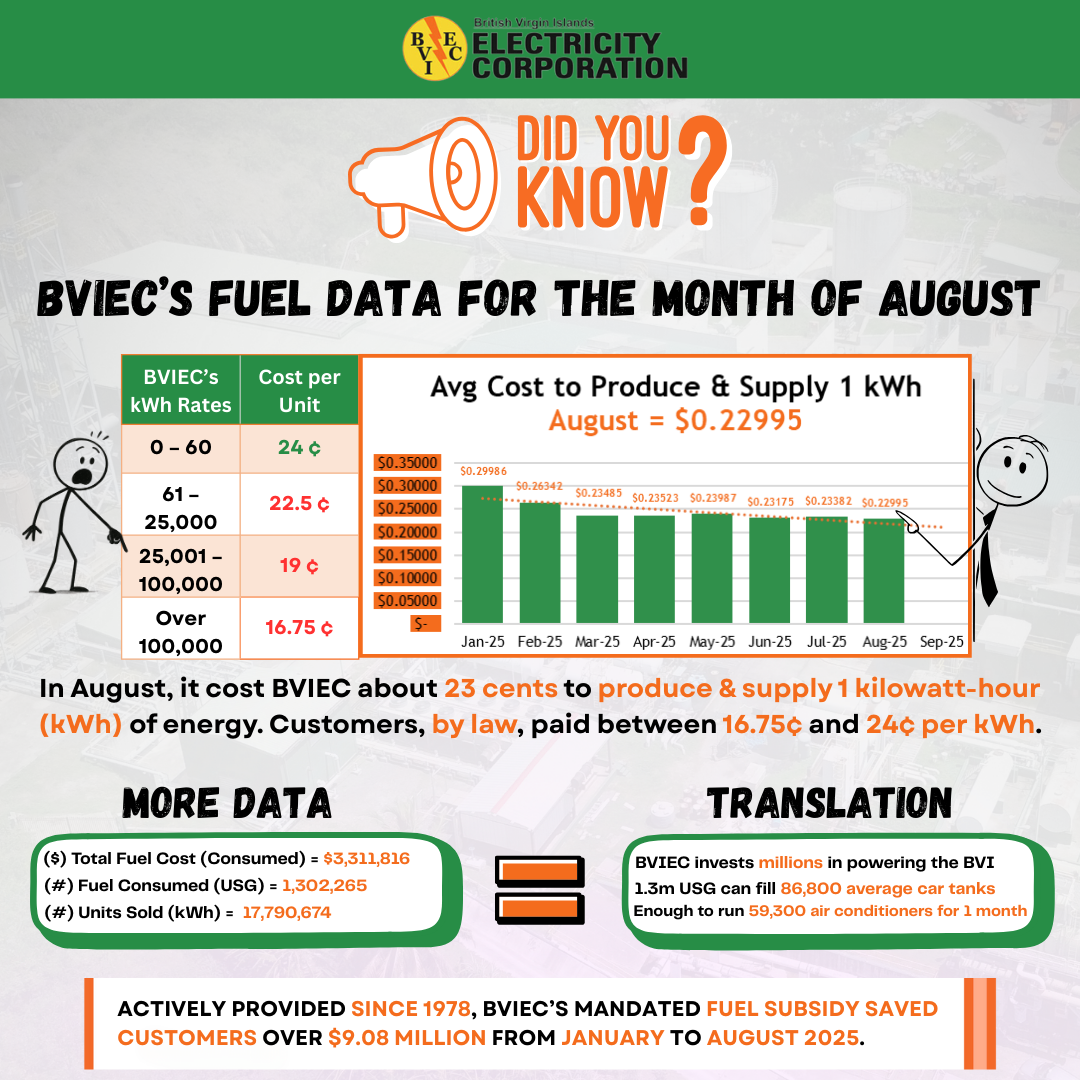
Tortola, British Virgin Islands, September 25, 2025 — Each month, the BVI Electricity Corporation shares its Fuel Data Report to give customers a clear picture of what it takes to power the Virgin Islands. Our goal is to be transparent about the real costs of producing electricity, while helping everyone better understand the fuel, resources, and subsidies that keep the Territory running.
By breaking down the information into simple terms and relatable examples, we aim to educate our community about the inner workings of what powers our homes, schools, and businesses daily.
- Total Fuel Cost Consumed ($3,311,816)
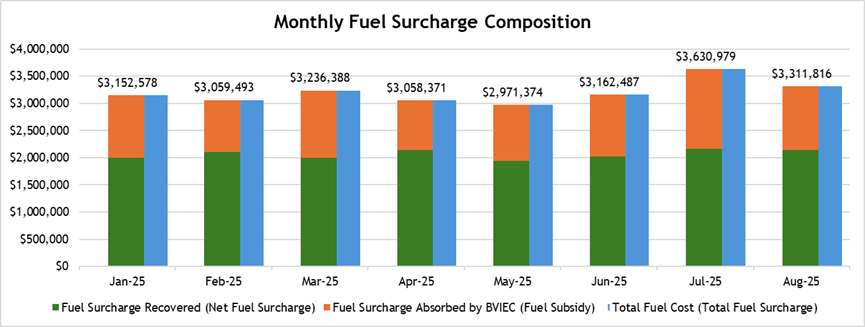
What it means: The total money BVIEC spent on fuel in August to generate electricity for the Territory.
Why it matters: Fuel is BVIEC’s single largest expense and it directly determines the cost of producing electricity.
Relatable Example: Enough to fill two Olympic-size swimming pools with fuel.
- Total Fuel Consumed (1,302,265 US Gallons)
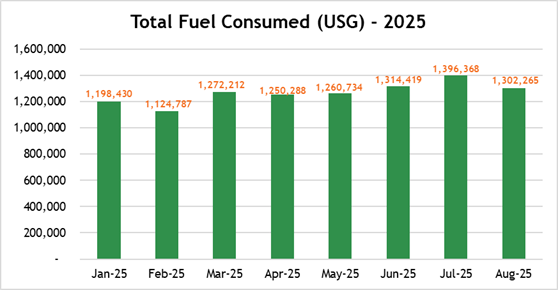
⛽ What it means: The amount of fuel BVIEC used in August to generate electricity.
Why it matters: The more fuel consumed, the higher the cost of producing electricity for customers.
Relatable Example: Enough to fill 86,000 average car tanks (15 gallons each).
- Average Fuel Price per US Gallon ($2.47)
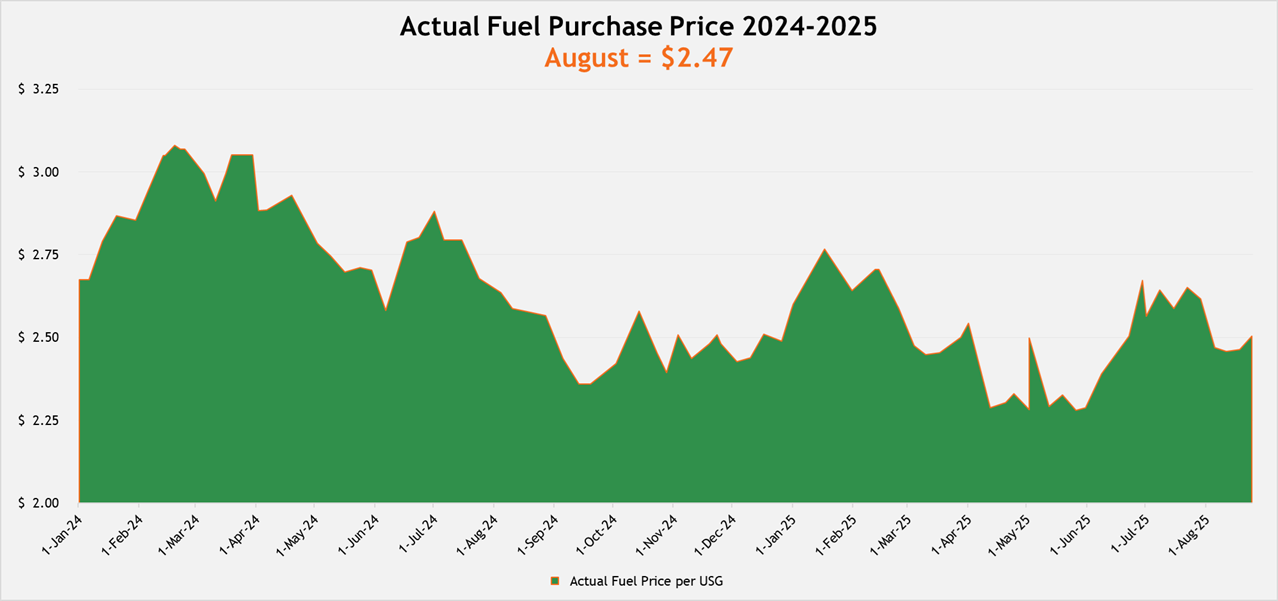
️ What it means: The average price BVIEC paid for each gallon of fuel in August.
Why it matters: Global oil prices drive this number and directly affect the cost of generating electricity.
Relatable Example: BVIEC used approximately 42,000 gallons of fuel daily in August.
- Total Units Sold (17,790,674 kWh)
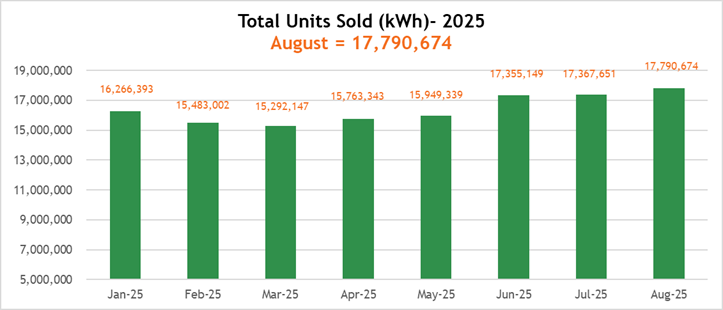
What it means: A kilowatt-hour (kWh) is the basic unit of electricity — how your bill is measured.
Why it matters: This shows how much electricity customers used in August.
Relatable Example: Enough to run about 59,000 air conditioners for a month (a mid-size AC unit uses about 300 kWh per month – when run daily for cooling).
- Average Cost to Produce & Supply 1 kWh ($0.22995) {23¢}
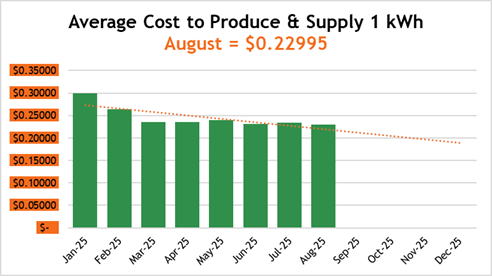
⚡ What it means: The average cost for BVIEC to produce and deliver one unit of electricity.
Why it matters: Customer rates are regulated between 16.75¢ and 24¢ per kWh. In many cases, BVIEC sells electricity at or below the cost of producing it.
Relatable Example: 1 kWh is equivalent to enough to keep a fridge running for an hour or equals enough for a ceiling fan to run overnight.
- Fuel Surcharge Subsidy in August ($1,170,900.52)
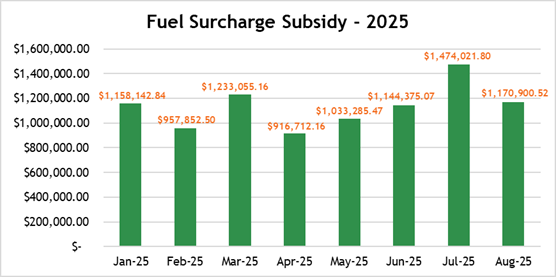
What it means: The fuel subsidy is financial support required by law that lowers the fuel surcharge customers would otherwise pay. In August alone, this covered more than $1.17 million.
Why it matters: This saves customers money each month, but it also means BVIEC must continue operating within ageing fixed rates (1978) while supplementing customers, even when production costs rise — highlighting the challenge of balancing affordability with sustainability.
Relatable Example: In August, every household benefited from the fuel subsidy, saving on their bills. But under the current rate structure, businesses that used more than 100,000 kWh paid just 16.75¢ per kWh, while it cost BVIEC nearly 23¢ to produce and supply that same electricity. That’s like selling a loaf of bread for $1.67 when it actually costs $2.30 to bake — the customer saves, but the producer carries the loss.
- Cumulative Fuel Surcharge Subsidy YTD ($9,088,346)

What it means: The total amount BVIEC has contributed in subsidies for 2025 so far.
Why it matters: The subsidy represents millions saved by customers, but also highlights the financial gap BVIEC must absorb to keep power affordable. It underscores the importance of energy efficiency and renewable investments to reduce dependency on costly imported fuel.
Relatable Example: Equal to approximately two months of free electricity for every customer in the BVI.
Archive
- November 2025
- October 2025
- September 2025
- August 2025
- July 2025
- June 2025
- May 2025
- April 2025
- March 2025
- January 2025
- December 2024
- July 2024
- February 2024
- June 2023
- December 2022
- August 2022
- January 2022
- November 2021
- October 2021
- May 2021
- January 2021
- December 2020
- June 2020
- March 2020
- October 2019
- August 2019
- November 2018
- July 2018
- August 2017
- May 2017
- January 2017
- October 2016
- September 2016
- August 2016
- March 2015
- December 2014



